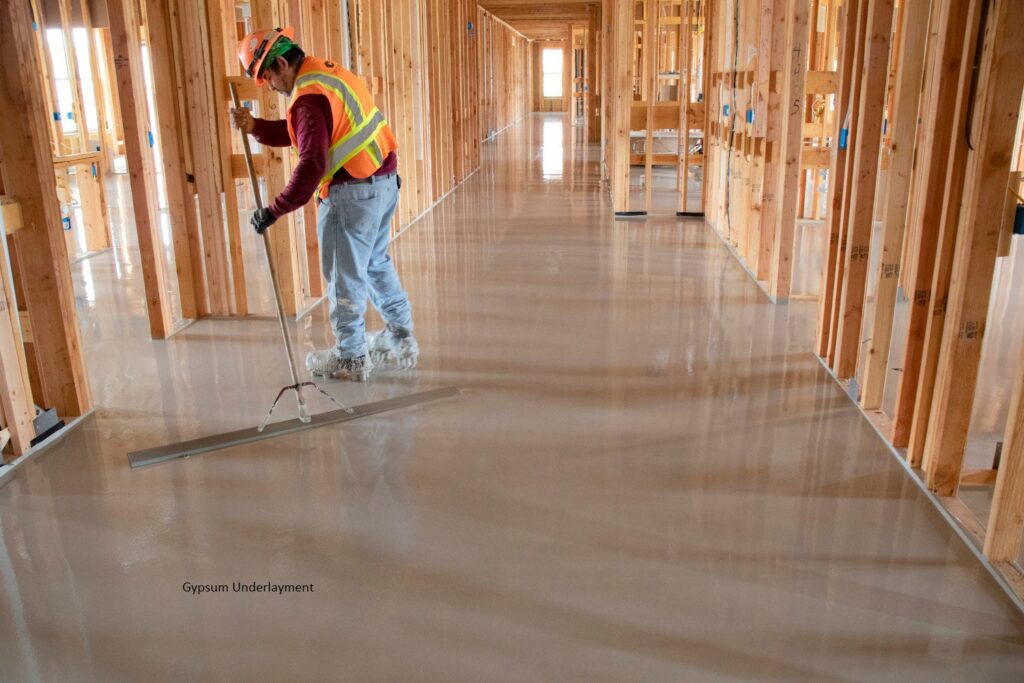Introduction
Flooring is a key component in defining the aesthetics and functioning of a place while building or renovating it. Gypsum underlayment is a multipurpose and crucial substance used in the building sector to produce a durable, level, and smooth surface for various flooring projects. We will go into the realm of in this post and examine its advantages, uses, methods of installation, and more.
Understanding Gypsum Underlayment
Gypsum underlayment is a kind of flooring material made of gypsum plaster, aggregates, and water. It is sometimes referred to as gypsum subfloor or gypcrete. To produce a smooth and level surface for the final flooring material, such as tiles, hardwood, carpet, or vinyl, it is laid over structural subfloors. The underlayment is well-liked because of its superior self-leveling capabilities, which make it a great option for creating flat surfaces on irregular substrates.
Benefits of Gypsum Underlayment
- The strengthens the subfloor with an additional layer, increasing the flooring’s overall resilience and lifetime.
- Gypsum is naturally fire-resistant, thus adds an extra layer of safety in areas where fire protection is a concern.
- The assists in reducing sound transmission between floors, making the environment quieter and cozier.
- Thermal Properties: This material naturally conducts heat, which can help to keep an indoor environment at a reasonable temperature.
- Smooth Surface: The offers a smooth and level surface, minimizing flaws and inconsistencies that could influence the finished flooring’s appearance and functionality.
Residential Spaces
The is frequently utilized in residential situations where a level surface is necessary, such as living rooms, bedrooms, and kitchens. Its self-leveling qualities make it a useful alternative for establishing a level foundation for various flooring options.
Commercial Spaces
Underlayment made of gypsum is often used in commercial buildings like offices, shops, and hotels. Its ability to resist fire and absorb sound enhances the security and comfort of these spaces..
Industrial Settings
The aids in constructing a strong and durable flooring in industrial environments that can handle the demands of heavy machinery and equipment.
Surface Preparation
The subfloor needs to be completely cleaned, cleared of dirt, and professionally prepared before underlayment is applied. In order to create a continuous surface, any gaps or cracks should be filled.
Mixing and Pouring
Gypsum powder and water are combined to create the mixture. The slurry is then applied uniformly to the subfloor using specialist equipment. Because of the material’s self-leveling characteristics, it settles evenly.
Curing and Drying
The needs time to cure and dry once it is poured. The material is strengthened throughout the curing process, which also gets it ready for the final flooring installation.
Conclusion
Gypsum underlayment is a crucial element in the building and flooring industries, offering a sturdy base for a range of flooring materials. It is a desirable option for both residential and commercial settings due to its self-leveling characteristics, fire resistance, sound insulation, and smooth surface. The improves the toughness and functionality of flooring, which raises the standard and lifetime of any interior area.
FAQs
Is gypsum underlayment suitable for outdoor applications?
Gypsum underlayment is not recommended for outdoor use due to its vulnerability to moisture and environmental elements.
Can I install flooring directly on top of gypsum underlayment?
While gypsum underlayment provides a smooth surface, it’s advisable to follow manufacturer recommendations and install a suitable flooring layer on top for best results.
Is gypsum underlayment environmentally friendly?
Gypsum is a naturally occurring mineral, making gypsum underlayment a relatively eco-friendly choice compared to synthetic materials.


